

0
+
Google Reviews


0
+
4.1(2092 Ratings)
VMware Horizon, previously known as VMware View, is a virtual desktop infrastructure (VDI) solution developed by VMware, Inc. It allows organizations to deliver virtualized desktops and applications to end-users securely and efficiently. It is especially valuable for industries with strict data security and compliance requirements, such as healthcare, finance, and government.
Duration of Training : 40 Hours
Batch type : Weekdays/Weekends
Mode of Training : Classroom/Online/Corporate Training




Curriculum Designed by Experts
Course completion certificate and Global Certifications are part of our all Master Program
Course completion certificate and Global Certifications are part of our all Master Program
Course completion certificate and Global Certifications are part of our all Master Program
Unlock in-demand skills with VMWARE VIEW course training! This certification equips you with expertise in virtualization and cloud technology, enhancing your career opportunities. Enroll today to gain hands-on experience and boost your credentials in the world of IT.
Explore exciting career opportunities with VMWARE VIEW course training! Gain in-demand skills in virtualization and cloud management. Enroll now to boost your career with the VMWARE VIEW course certification and unlock high-paying job roles in the tech industry.
: Embrace cloud adoption with VMWARE VIEW course training! Learn how to efficiently manage and deploy virtualized environments in the cloud. Enroll today for VMWARE VIEW course certification and stay ahead in the ever-growing tech industry.
Achieve scalability and flexibility with VMWARE VIEW course training! Master the skills to scale and adapt virtualized environments to meet business needs. Enroll today for VMWARE VIEW course certification and enhance your expertise in dynamic IT infrastructures
Master cost management with VMWARE VIEW course training! Learn how to optimize virtualized environments, reduce costs, and improve efficiency. Enroll today for VMWARE VIEW course certification and enhance your ability to manage IT budgets effectively.
Ensure security and compliance with VMWARE VIEW course training! Learn how to safeguard virtual environments while adhering to industry standards. Enroll today for VMWARE VIEW course certification to enhance your skills in managing secure IT infrastructures.
Radical Technologies is the leading IT certification institute in Pune, offering a wide range of globally recognized certifications across various domains. With expert trainers and comprehensive course materials, it ensures that students gain in-depth knowledge and hands-on experience to excel in their careers. The institute’s certification programs are tailored to meet industry standards, helping professionals enhance their skillsets and boost their career prospects. From cloud technologies to data science, Radical Technologies covers it all, empowering individuals to stay ahead in the ever-evolving tech landscape. Achieve your professional goals with certifications that matter.
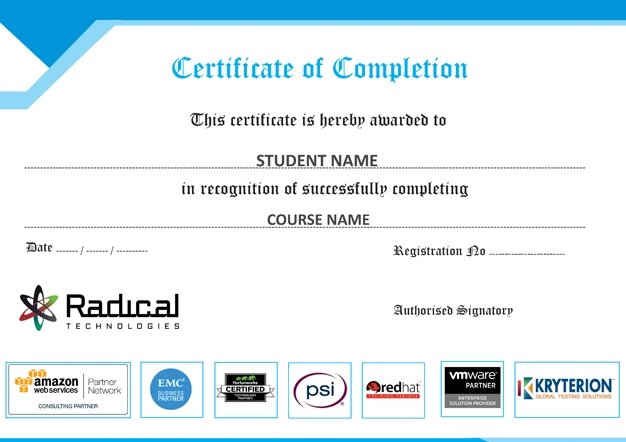





At Radical Technologies, we are committed to your success beyond the classroom. Our 100% Job Assistance program ensures that you are not only equipped with industry-relevant skills but also guided through the job placement process. With personalized resume building, interview preparation, and access to our extensive network of hiring partners, we help you take the next step confidently into your IT career. Join us and let your journey to a successful future begin with the right support.
At Radical Technologies, we ensure you’re ready to shine in any interview. Our comprehensive Interview Preparation program includes mock interviews, expert feedback, and tailored coaching sessions to build your confidence. Learn how to effectively communicate your skills, handle technical questions, and make a lasting impression on potential employers. With our guidance, you’ll walk into your interviews prepared and poised for success.
At Radical Technologies, we believe that a strong professional profile is key to standing out in the competitive IT industry. Our Profile Building services are designed to highlight your unique skills and experiences, crafting a resume and LinkedIn profile that resonate with employers. From tailored advice on showcasing your strengths to tips on optimizing your online presence, we provide the tools you need to make a lasting impression. Let us help you build a profile that opens doors to your dream career.


Infrastructure Provisioning
Implementing automated infrastructure provisioning and configuration management using Ansible. This may include setting up servers, networking devices, and other infrastructure components using playbooks and roles.


Applications Deployment
Automating the deployment and orchestration of applications across development, testing, and production environments. This could involve deploying web servers, databases. middleware, and other application components using Ansible


Continuous Integration
Integrating Ansible into CI/CD pipelines to automate software. build, test, and deployment processes. This may include automating the creation of build artifacts, running tests, and deploying applications to various environments.


I recently completed the VMware Horizon (VMware View) Certification in Bengaluru, and I am really impressed with the quality of training at this institute. It has significantly boosted my confidence in managing virtual desktop environments.
The VMware Horizon (VMware View) Classes in Bengaluru were very informative. The instructors were knowledgeable and ensured that we had a hands-on experience with the technology.
I opted for VMware Horizon (VMware View) Corporate Training in Bengaluru, and it was tailored perfectly for our team's needs. The sessions were interactive, and we gained a solid understanding of virtual desktop management.
I opted for VMware Horizon (VMware View) Corporate Training in Bengaluru, and it was tailored perfectly for our team's needs. The sessions were interactive, and we gained a solid understanding of virtual desktop management.
The VMware Horizon (VMware View) Institute in Bengaluru offers exceptional training. The infrastructure is top-notch, and the trainers ensured every student understood the practical applications of the technology.
I enrolled in the VMware Horizon (VMware View) Training in Bengaluru, and it has been a rewarding experience. The course covered everything I needed to excel in the virtual desktop space.
The VMware Horizon (VMware View) Online Classes in Bengaluru were flexible and allowed me to learn at my own pace. I appreciated the ability to access resources anytime, making it easy to manage with my schedule.
Thanks to the VMware Horizon (VMware View) Online Course in Bengaluru, I was able to gain valuable skills without leaving my home. The course materials were comprehensive, and the online support was outstanding.
The VMware Horizon (VMware View) Online Certification in Bengaluru was a great addition to my professional qualifications. The training equipped me with the skills to handle VMware environments efficiently.
Taking VMware Horizon (VMware View) Online Training in Bengaluru was a fantastic experience. The course was well-structured, and I gained a strong understanding of managing virtual desktops in a corporate setting.
The VMware Horizon (VMware View) Course in Bengaluru is designed to provide practical, real-world knowledge. It’s a great choice for anyone looking to specialize in virtual desktop infrastructure.
I had a great experience attending VMware Horizon (VMware View) Classes in Bengaluru. The trainers are experts in the field, and their teaching approach made complex concepts easy to grasp.
The VMware Horizon (VMware View) Certification in Bengaluru opened up several new career opportunities for me. I now have the confidence to work with enterprise-level virtual desktop environments.
The VMware Horizon (VMware View) Training in Bengaluru was extremely helpful. I was able to learn all about VDI in a structured manner, and the practical exercises ensured I understood the concepts.
I highly recommend VMware Horizon (VMware View) Institute in Bengaluru. The trainers were passionate and provided practical insights that I can immediately apply in my job.
The VMware Horizon (VMware View) Corporate Training in Bengaluru was tailored to our team’s needs. It helped us understand how to implement VMware Horizon in our organization’s infrastructure effectively.
I loved the flexibility of VMware Horizon (VMware View) Online Classes in Bengaluru. Being able to study from home made it easier to balance work and learning.
The VMware Horizon (VMware View) Online Course in Bengaluru provided all the information I needed to master the virtual desktop technology. The training was very detailed and easy to follow.
Enrolling in VMware Horizon (VMware View) Online Certification in Bengaluru helped me gain expertise in virtual desktop management. The course was well-structured, and I received ample support during the training.
I thoroughly enjoyed VMware Horizon (VMware View) Online Training in Bengaluru. The instructors were engaging, and the learning materials were updated with the latest features of VMware Horizon.
The VMware Horizon (VMware View) Course in Bengaluru offered excellent value for the knowledge gained. The training sessions were practical, and the hands-on labs helped me apply the concepts in real-world scenarios.
The VMware Horizon (VMware View) Classes in Bengaluru offered a perfect blend of theory and practical exercises. I left with a clear understanding of how to work with VMware Horizon in enterprise environments.
Completing the VMware Horizon (VMware View) Certification in Bengaluru was a great decision. It gave me the practical skills I needed to pursue a career in virtual desktop infrastructure.
The VMware Horizon (VMware View) Corporate Training in Bengaluru is perfect for organizations looking to upskill their teams. The customized curriculum and hands-on sessions helped our team get up to speed quickly.
I highly recommend VMware Horizon (VMware View) Online Course in Bengaluru for anyone looking to advance their career in virtual desktop technology. The course is comprehensive, and the online support was excellent.
















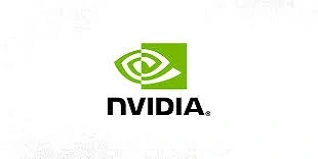

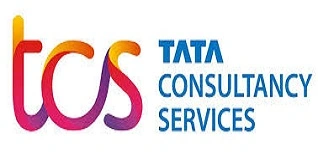







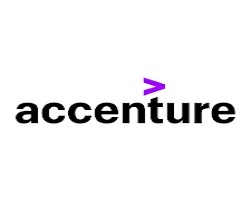

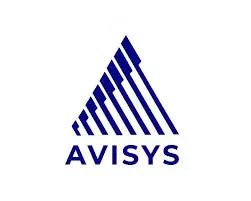

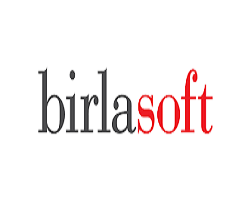

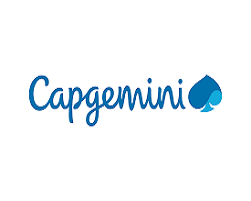

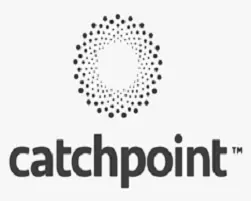





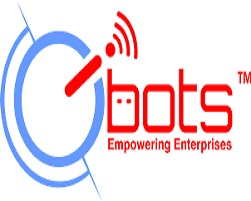

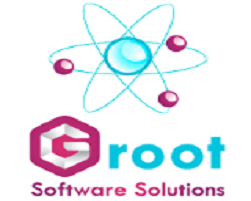









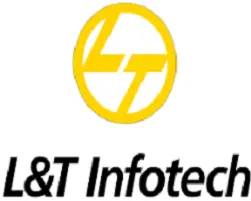

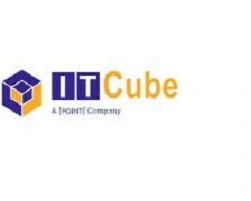



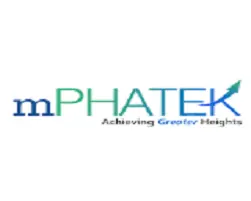

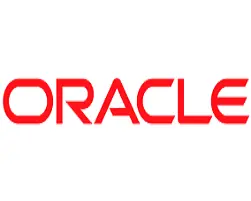







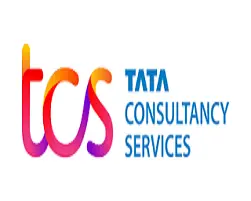





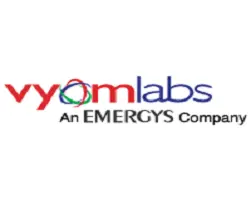



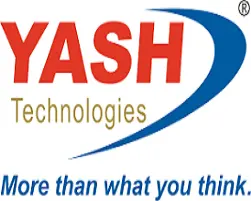

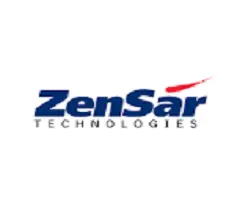

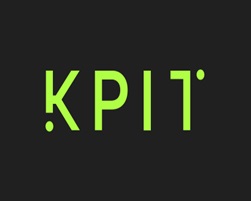



VMware Horizon, formerly known as VMware View, is a comprehensive virtual desktop infrastructure (VDI) and application delivery platform. It enables businesses to provide virtual desktops and applications to end-users, improving security, flexibility, and efficiency while centralizing IT management.
VMware Horizon works by virtualizing desktops and applications from a central server or data center, allowing users to access them remotely from any device. It provides a secure, high-performance environment with centralized management and simplified IT operations.
Key features of VMware Horizon include virtual desktop infrastructure (VDI), application virtualization, multi-device support, high availability, security encryption, user profile management, flexible deployment options, and integration with VMware vSphere for resource management.
VMware Horizon is a platform for delivering virtual desktops and applications, while VMware vSphere is a virtualization infrastructure platform that provides the underlying hardware virtualization and resource management. Horizon relies on vSphere for managing virtual machines (VMs) and storage.
VMware Horizon offers multiple deployment options, including on-premises, cloud-based, and hybrid deployments. This flexibility allows organizations to choose the deployment model that best aligns with their business needs, whether they require full control or prefer cloud scalability.
VMware Horizon enhances security by using encryption for data in transit and at rest, multi-factor authentication (MFA), role-based access control (RBAC), and secure gateways for remote access. It ensures that sensitive data is protected and user access is tightly controlled.
Yes, VMware Horizon is an excellent solution for remote work. It allows users to securely access their virtual desktops and applications from any device, anywhere, providing a seamless remote work experience with centralized IT management.
VMware Horizon plays a crucial role in disaster recovery by ensuring high availability and providing a mechanism for quickly recovering virtual desktops and applications in case of a disaster. It enables businesses to maintain operations with minimal downtime during system failures.
VMware Horizon supports application virtualization by enabling applications to run on virtual desktops without being installed locally on end-user devices. This allows businesses to deliver applications quickly and securely without compatibility issues.
VMware vSAN (Virtual SAN) provides storage for VMware Horizon environments by creating a software-defined storage solution that integrates seamlessly with VMware Horizon. It ensures high-performance, scalable storage for virtual desktops and applications while simplifying storage management.
VMware Horizon supports a wide range of devices, including Windows PCs, macOS computers, Linux-based machines, smartphones, tablets, and thin clients. It ensures that end-users can access their virtual desktops from any device, providing flexibility in the workplace.
Both VMware Horizon and Citrix Virtual Apps and Desktops are VDI solutions, but VMware Horizon integrates more closely with VMware’s ecosystem (such as vSphere and vSAN) and offers features like deep integration with VMware NSX for network security. Citrix, on the other hand, is often favored for its extensive network optimization features.
Administrators can manage VMware Horizon environments through the Horizon Administrator Console, which provides a centralized interface for tasks such as provisioning virtual desktops, managing applications, configuring security policies, and monitoring system performance.
Yes, VMware Horizon is highly scalable and can meet the needs of large organizations. Its architecture supports the addition of more virtual desktops and applications as demand grows, with built-in tools for managing and optimizing resources across a distributed environment.
VMware Horizon offers several licensing models, including per-user and per-device licensing options. The choice of model depends on the organization’s needs and the scale of deployment. VMware also offers various editions, such as Horizon Standard, Advanced, and Enterprise, with differing features and capabilities to cater to different business requirements.
Ambegaon Budruk | Aundh | Baner | Bavdhan Khurd | Bavdhan Budruk | Balewadi | Shivajinagar | Bibvewadi | Bhugaon | Bhukum | Dhankawadi | Dhanori | Dhayari | Erandwane | Fursungi | Ghorpadi | Hadapsar | Hingne Khurd | Karve Nagar | Kalas | Katraj | Khadki | Kharadi | Kondhwa | Koregaon Park | Kothrud | Lohagaon | Manjri | Markal | Mohammed Wadi | Mundhwa | Nanded | Parvati (Parvati Hill) | Panmala | Pashan | Pirangut | Shivane | Sus | Undri | Vishrantwadi | Vitthalwadi | Vadgaon Khurd | Vadgaon Budruk | Vadgaon Sheri | Wagholi | Wanwadi | Warje | Yerwada | Akurdi | Bhosari | Chakan | Charholi Budruk | Chikhli | Chimbali | Chinchwad | Dapodi | Dehu Road | Dighi | Dudulgaon | Hinjawadi | Kalewadi | Kasarwadi | Maan | Moshi | Phugewadi | Pimple Gurav | Pimple Nilakh | Pimple Saudagar | Pimpri | Ravet | Rahatani | Sangvi | Talawade | Tathawade | Thergaon | Wakad
I had an amazing experience with this service. The team was incredibly supportive and attentive to my needs. The quality of the work exceeded my expectations. I would highly recommend this to anyone looking for reliable and professional service."
I had an amazing experience with this service. The team was incredibly supportive and attentive to my needs. The quality of the work exceeded my expectations. I would highly recommend this to anyone looking for reliable and professional service."
I had an amazing experience with this service. The team was incredibly supportive and attentive to my needs. The quality of the work exceeded my expectations. I would highly recommend this to anyone looking for reliable and professional service."
I had an amazing experience with this service. The team was incredibly supportive and attentive to my needs. The quality of the work exceeded my expectations. I would highly recommend this to anyone looking for reliable and professional service."
I had an amazing experience with this service. The team was incredibly supportive and attentive to my needs. The quality of the work exceeded my expectations. I would highly recommend this to anyone looking for reliable and professional service."
VMware Horizon, formerly known as VMware View, is a leading virtual desktop infrastructure (VDI) platform that enables businesses to deliver virtualized desktops and applications to end-users, securely and efficiently. It helps organizations simplify IT management, enhance security, and improve user experiences by providing a flexible and scalable virtual workspace solution.
VMware Horizon integrates seamlessly with VMware vSphere and other VMware technologies, creating a unified solution for managing virtual environments. With this platform, IT administrators can manage virtual desktops, applications, and other IT resources from a single console, reducing operational complexity and improving productivity.
Virtual Desktop Infrastructure (VDI)
VMware Horizon offers a powerful VDI solution, allowing organizations to provision virtual desktops for end-users. Users can access their desktop environments from any device with an internet connection, enabling a flexible and mobile workforce. IT teams can centrally manage and monitor these desktops, ensuring consistency and security.
Application Virtualization
In addition to desktop virtualization, VMware Horizon provides application virtualization. Organizations can deliver virtualized applications to end-users without the need to install software locally on their devices. This results in faster application delivery, reduced compatibility issues, and a more streamlined IT environment.
Unified Endpoint Management
VMware Horizon supports a wide variety of endpoints, including PCs, laptops, tablets, smartphones, and thin clients. With the Horizon platform, IT teams can ensure that users have consistent access to their virtual desktop environments across multiple devices.
Seamless User Experience
VMware Horizon is designed to deliver a high-performance, responsive, and consistent user experience. With features like GPU-based graphics acceleration and user profile management, Horizon ensures that end-users can enjoy their virtualized desktop or application with minimal latency and maximum efficiency.
Security and Compliance
Security is a top priority for VMware Horizon. The platform offers advanced security features, such as encryption of data in transit and at rest, multi-factor authentication (MFA), and role-based access controls (RBAC). These features ensure that sensitive corporate data is protected, even when users access their desktops from remote locations.
Flexible Deployment Options
VMware Horizon offers several deployment options, including on-premises, cloud, or hybrid environments. Organizations can choose the deployment model that best suits their IT strategy, whether they need complete control over their infrastructure or prefer the flexibility and scalability of the cloud.
Management and Automation
VMware Horizon simplifies desktop and application management with integrated automation tools. Administrators can automate tasks like desktop provisioning, patch management, and policy enforcement, reducing manual workload and minimizing human error.
High Availability and Scalability
VMware Horizon provides high availability and fault tolerance for virtual desktops and applications. The platform can scale easily to accommodate growing user populations, ensuring that your organization can expand its virtual desktop infrastructure without sacrificing performance or reliability.
Cost Savings and Efficiency
By consolidating IT resources and simplifying infrastructure management, VMware Horizon helps organizations reduce costs associated with hardware, software, and administrative overhead. Virtual desktops are more efficient and cost-effective than traditional physical desktops, providing long-term savings for businesses.
Improved IT Efficiency
With centralized management and automation, VMware Horizon simplifies desktop provisioning, patching, and updates. IT staff can quickly deploy new desktops and applications, reducing deployment time and improving operational efficiency.
Enhanced Security
VMware Horizon’s security features, such as secure remote access, end-to-end encryption, and identity management, help protect corporate data and ensure that users can securely access their virtual desktops and applications from any location.
Flexibility and Mobility
Employees can access their virtual desktops and applications from virtually any device, giving them the flexibility to work from anywhere. This mobility enhances collaboration and allows businesses to embrace remote work and bring-your-own-device (BYOD) initiatives.
Cost Savings
By leveraging virtualized desktops, organizations can extend the life of existing hardware and reduce the need for costly physical devices. Centralized IT management and automation also help reduce operational costs.
Business Continuity
VMware Horizon ensures that virtual desktops and applications are highly available, even during network or hardware failures. With the ability to easily back up and restore virtual environments, businesses can maintain continuity even in the event of unexpected disruptions.
VMware Horizon (formerly VMware View) is a robust and versatile platform that enables organizations to deliver virtual desktops and applications securely, efficiently, and with ease. Its flexibility allows businesses to adopt a range of use cases across different industries. Below are some of the key applications of VMware Horizon that help organizations achieve improved IT management, enhanced security, and cost savings.
1. Remote Work Solutions
One of the most prominent applications of VMware Horizon is enabling secure remote work environments. As organizations increasingly adopt flexible working models, VMware Horizon provides employees with the ability to access their virtual desktops and applications from any device, anywhere. The platform ensures that sensitive company data remains secure through encryption and authentication, making it an ideal solution for businesses embracing remote work, hybrid work, and Bring Your Own Device (BYOD) strategies.
Key Benefits:
Secure remote access to virtual desktops and applications
Supports remote collaboration tools and business productivity apps
Provides centralized management for IT teams
2. Disaster Recovery and Business Continuity
VMware Horizon is a key component of business continuity and disaster recovery strategies. With its ability to provide high availability and fault tolerance, Horizon ensures that critical virtual desktops and applications remain accessible, even in the event of hardware failures or system outages. Virtual desktops are backed up and can be quickly restored, minimizing downtime and data loss during unforeseen disruptions.
Key Benefits:
High availability of virtual environments
Faster recovery from system failures
Reduced risk of data loss with centralized backups
3. Education and Virtual Labs
In educational environments, VMware Horizon is used to create virtual classrooms and training environments. Institutions can provision virtual desktops with specific software applications, providing students and educators with a standardized desktop experience. This allows schools and universities to offer remote learning opportunities while keeping the IT infrastructure manageable and cost-effective. Additionally, VMware Horizon enables educational institutions to scale resources based on student demand without worrying about the limitations of physical hardware.
Key Benefits:
Cost-effective virtual classroom management
Easy scalability for student demand
Simplified deployment of specialized software for educational purposes
4. Healthcare Industry Solutions
In the healthcare sector, VMware Horizon offers a secure platform for managing electronic health records (EHR), telemedicine applications, and other healthcare services. With Horizon’s virtual desktop infrastructure (VDI), healthcare professionals can access patient data from any location while ensuring compliance with privacy and security regulations like HIPAA. Virtual desktops reduce the risk of data breaches, as patient information is centrally managed and not stored locally on devices.
Key Benefits:
Secure access to EHR and medical applications
Compliance with healthcare regulations (e.g., HIPAA)
Enhanced mobility for healthcare professionals working across locations
5. BYOD (Bring Your Own Device) and Secure Access
VMware Horizon enables businesses to support BYOD initiatives by allowing employees to use personal devices like smartphones, tablets, and laptops to access corporate applications and virtual desktops. With advanced security features like multi-factor authentication (MFA), VMware Horizon ensures that sensitive company data is protected even when accessed from external devices. This flexible approach enhances employee productivity while maintaining tight control over corporate resources.
Key Benefits:
Secure access to company resources from personal devices
Simplified device management for IT teams
Increased employee satisfaction and productivity with device flexibility
6. Call Centers and Customer Support
VMware Horizon is commonly used in call center environments to provide agents with access to virtual desktops that host necessary customer support applications. With Horizon, call centers can quickly scale their virtual desktop infrastructure to accommodate changing staffing needs without worrying about physical device limitations. Centralized management ensures that software updates and configurations are applied uniformly, reducing downtime and ensuring operational efficiency.
Key Benefits:
Quick scalability for fluctuating call center staff
Streamlined IT management and software updates
Enhanced customer support through secure and efficient virtual workspaces
7. Software Development and Testing Environments
Software development teams benefit from VMware Horizon by having the ability to create isolated virtual environments for development, testing, and quality assurance (QA). Developers can quickly provision virtual desktops that simulate different operating systems, software configurations, and testing conditions. This flexibility speeds up the development process and reduces the complexity of managing physical devices for development and testing purposes.
Key Benefits:
Fast provisioning of development and testing environments
Ability to replicate different configurations for cross-platform testing
Increased efficiency in managing development resources
8. Retail and Point-of-Sale (POS) Systems
In the retail industry, VMware Horizon is used to streamline the management of point-of-sale (POS) systems, inventory management applications, and employee workstations. With VMware Horizon, retailers can deploy virtual desktops to retail terminals, enabling employees to access applications securely and efficiently. IT departments can easily monitor and manage these systems, ensuring compliance and security across the organization.
Key Benefits:
Simplified deployment and management of retail applications
Increased security for customer data and transactions
Cost savings through centralized management of POS terminals
9. Legal and Financial Services
For industries like legal and financial services, VMware Horizon provides a secure environment to manage sensitive documents, client data, and business applications. With its centralized control and access management, Horizon ensures that only authorized users can access confidential information. The platform’s high security standards are ideal for organizations that need to comply with regulatory requirements such as GDPR, SOC 2, and others.
Key Benefits:
Enhanced security and compliance with industry regulations
Centralized management of confidential data
Improved collaboration without compromising data protection
10. Cloud and Hybrid Cloud Deployments
VMware Horizon supports both on-premises and cloud-based environments, making it an excellent solution for businesses that are transitioning to the cloud or adopting a hybrid cloud model. Horizon allows organizations to extend their on-premises virtual desktops and applications to the cloud, providing scalability, flexibility, and disaster recovery benefits while maintaining centralized control.
Key Benefits:
Seamless integration with private, public, or hybrid clouds
Scalable cloud resources for virtual desktops and applications
Flexibility to move workloads between on-premises and cloud environments
Radical Technologies is the leading institute in Bangalore for VMware Horizon (VMware View) Course Training, offering world-class education and practical expertise to help professionals excel in the field of virtual desktop infrastructure (VDI). We are committed to providing top-notch VMware Horizon (VMware View) Certification in Bengaluru, preparing students for successful careers in managing virtualized desktops and applications.
Our VMware Horizon (VMware View) Classes in Bengaluru are designed to cater to both beginners and experienced IT professionals. Our training programs provide comprehensive knowledge on VMware Horizon, from the basics to advanced topics, ensuring that you gain the skills required to deploy, manage, and optimize virtual desktops in enterprise environments. Whether you’re looking to enhance your skills with VMware Horizon (VMware View) Training in Bengaluru or seeking specialized VMware Horizon (VMware View) Corporate Training in Bengaluru, we have tailored solutions for all your learning needs.
At Radical Technologies, we offer flexible learning options, including VMware Horizon (VMware View) Online Classes in Bengaluru. These online courses provide the same high-quality education as our classroom sessions, allowing you to learn from the comfort of your home or office. Our VMware Horizon (VMware View) Online Course in Bengaluru is designed to fit into your busy schedule, ensuring you can learn at your own pace while receiving expert guidance from seasoned trainers.
Our VMware Horizon (VMware View) Online Training in Bengaluru includes real-world scenarios, hands-on labs, and interactive sessions, equipping you with the practical skills needed to succeed. Upon completion of the VMware Horizon (VMware View) Online Certification in Bengaluru, you’ll be prepared to manage and maintain VMware environments with confidence.
As a trusted VMware Horizon (VMware View) Institute in Bengaluru, we take pride in offering industry-relevant training that equips our students with the skills needed to excel in a rapidly evolving IT landscape. Join us today and advance your career with the best VMware Horizon (VMware View) Training in Bengaluru.


(Our Team will call you to discuss the Fees)
Enrolling in the VMware Horizon (VMware View) Course in Bengaluru was one of the best decisions I made for my career. The trainers provided in-depth knowledge and practical insights, making it easier to understand complex concepts.